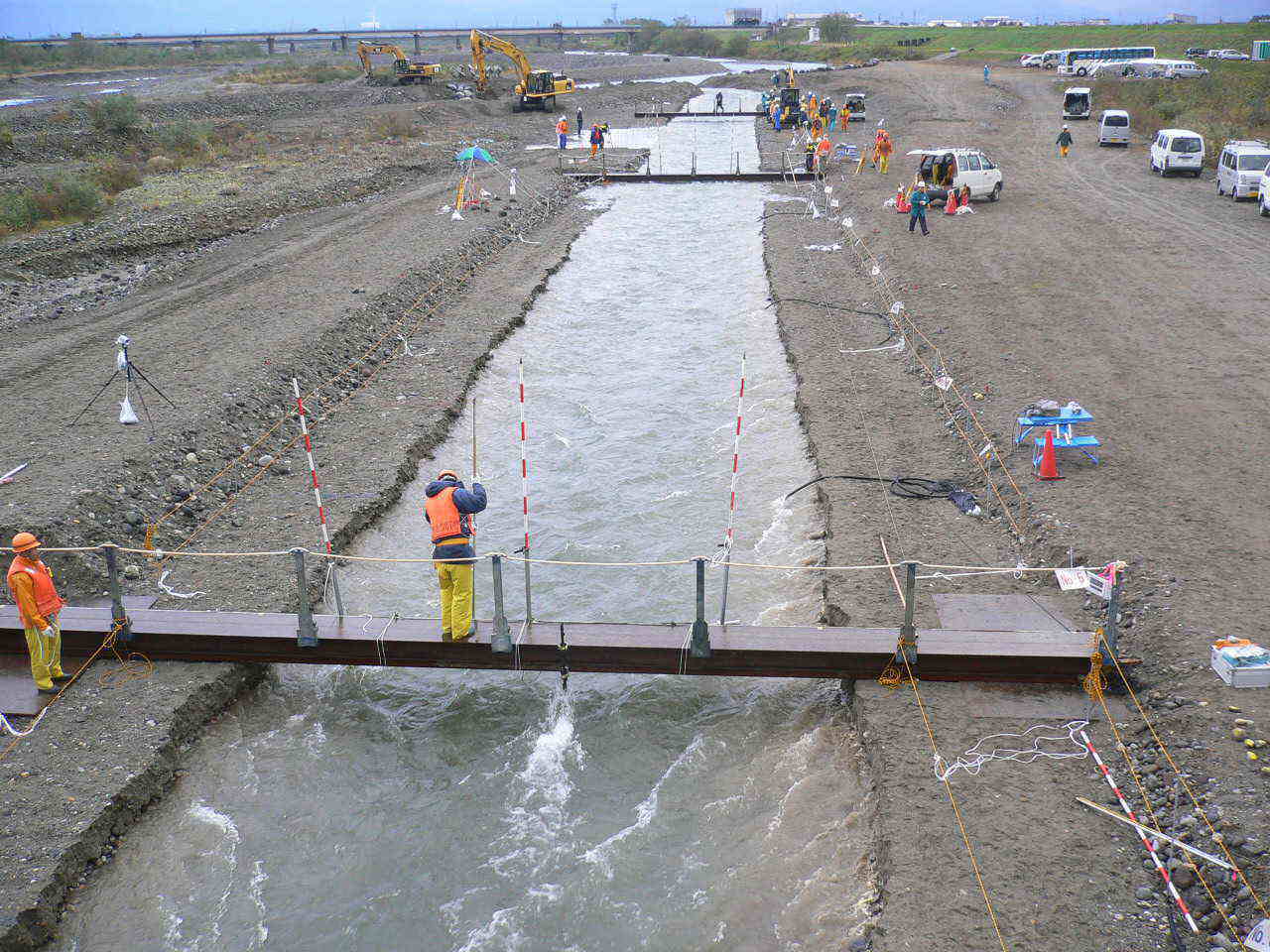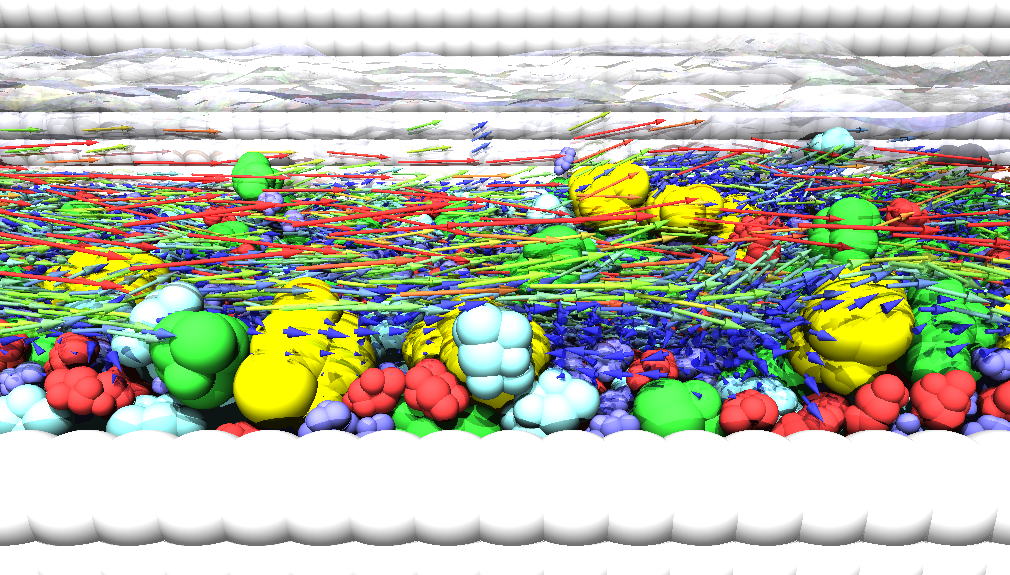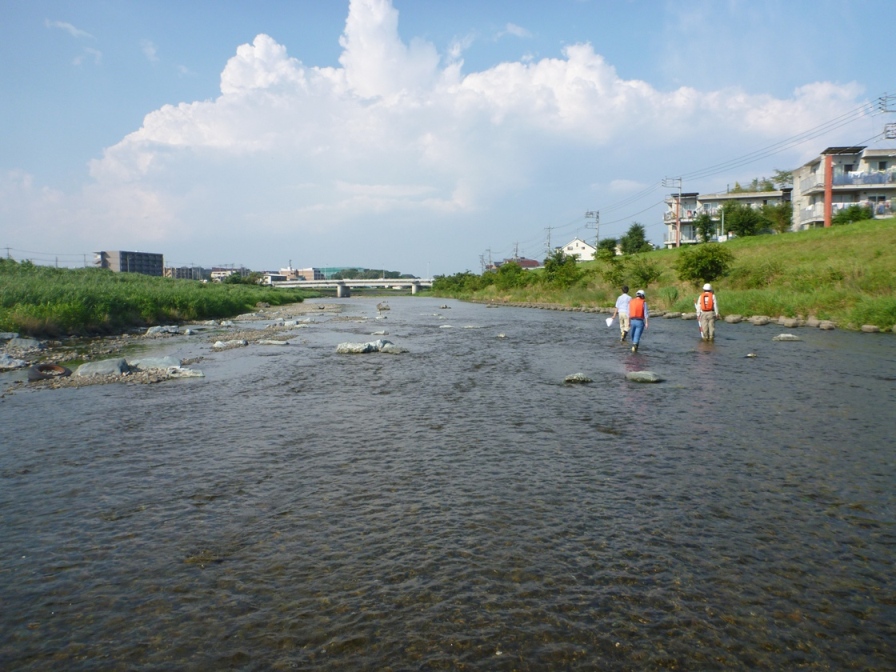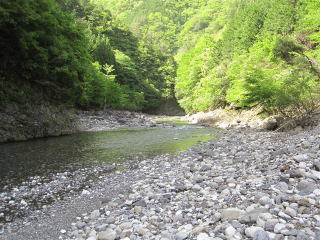
Research Projects
Rivers provide us water utilization, sceneries, recreations and aquatic habitats. However, rivers have an important role as corridors of flood waters and sediment transportation during flood events due to heavy rain. To satisfy these requirements is crucial for river designs. Additionally, rivers should accommodate expected flood risk to the global warming. Fukuoka unit is proposing innovative solutions on river design methods with a harmony between flood control and river environment through the hydraulic perspectives.
Abundant flood data in government administered rivers have increased a general understanding of flood flow phenomena, developing and verifying several analysis methods. Then the important issue is to predict and evaluate flood flows for individual rivers with diverse hydraulic and geomorphologic conditions. It is challenging to understand bed variation in rivers during floods. Direct measurements of bed topography and sediment transport in rivers during floods are extremely difficult. On the contrary, it is possible without trouble to measure temporal changes in water surface profiles during flood that represent all kinds of flood phenomena including temporal changes in bed variation. We have demonstrated that the bed variation analysis method coupled with temporal changes in observed water surface profiles is able to make it visible. The method has been presented to be useful in river design and maintenance. For this purpose, reliable methods that are suitable for analysis of flood flows and bed variations should be required.
The conventional method of bed variation calculation has been applied to middle-downstream reach of sand-gravel bed rivers. However, researchers and engineers have doubted for the applicability of gravel bed rivers in upper reaches, in which bed materials are composed of diverse sizes of sediment particles from boulders to fine sand. To develop a consistent analysis method of bed variation in rivers including upper reaches is an important issue for plans of flood control and sediment management in the whole river basin. Calculation methods for multi-scale phenomena of water flows and sediment transport are required for wide-ranging practical problems in rivers, coinciding with analysis methods based on a comprehensive consideration. Toward the above issues, we proceed with the following research projects.
1. Bed variation analysis method for gravel bed rivers with boulders, gravel and sand
The first research project is to develop a new bed variation analysis method for gravel bed rivers with boulders, gravel and sand. To clarify mechanisms on the sediment transport and bed variation, we have conducted the real scale experiments in a channel made in the Joganji River.
 Real scale experiments in the Joganji River: Behavior of gravel bed rivers were investigated with measuring variations in cross sectional form, velocity distributions, grain size distributions and irregularities on bed surface and sediment discharge.
Real scale experiments in the Joganji River: Behavior of gravel bed rivers were investigated with measuring variations in cross sectional form, velocity distributions, grain size distributions and irregularities on bed surface and sediment discharge.For more detailed discussions on dynamics of sediment particles and surrounding water flow near the bed, a movable-bed numerical channel which simulates three-dimensional movements of the stream and various shape gravel particles has been developed in Fukuoka Unit.
 Movable-bed numerical channel: Detailed dynamic interactions between sediment motions and surrounding
streams are visualized and examined by three-dimensional fluid dynamic
models coupled with momentum equations of various shape gravel particles.
Movable-bed numerical channel: Detailed dynamic interactions between sediment motions and surrounding
streams are visualized and examined by three-dimensional fluid dynamic
models coupled with momentum equations of various shape gravel particles.
2. Technology for bed elevation restoration
The second research project is to develop a technology for bed elevation restoration in severe bed declining rivers. It has been shown by the application of the first research project that boulders installed in the proper manner on the spot are useful for the restoration of bed degradation.
 Field experiment in the Asa River: Tthe effects of boulders array on bed elevation restoration were investigated
to develop the design method.
Field experiment in the Asa River: Tthe effects of boulders array on bed elevation restoration were investigated
to develop the design method.
3. Local scouring and deposition around river structures
The third project is research on bed variation with local scouring and deposition caused by river structures. The conventional two-dimensional method, which has been applied to bed variation analysis in rivers, is not able to calculate three dimensional flow inducing local scouring and deposition around structures. We have developed a new quasi-three dimensional flow calculation method without assumption of shallow water flows (General Bottom Velocity Method, BVC method) , considering horizontal vorticity motion and vertical pressure distribution to calculate three dimensional flow and bed variation around structures. The research on design methods for river structures based on the BVC method is being advanced
 Real scale experiments on three dimensional flows around structure: Detailed velocity distributions were measured by a new method with ADCP to validate the BVC method.
Real scale experiments on three dimensional flows around structure: Detailed velocity distributions were measured by a new method with ADCP to validate the BVC method.
4. Desirable and stable river width
The forth research project is on deciding desirable and stable width of rivers. The present several problems on flood control and river environment such as thick growth of trees, bed degradation and fixed narrow-deep water channel have its roots in the river width. The first and second projects will ultimately lead to the research on the stable river width. The original river width is considered to be controlled by discharge, slope and bed material. We have proposed the dimensionless stable river width formula based on the dynamic relationships between discharge, slope and sediment diameter for natural alluvial rivers in North America and Japan. We have examined the conditions of Japanese rivers through the comparisons with derived dimensionless stable river width formula. The discussions on the river width are divided into the design discharge and the actual flood discharge, aiming to solve the following significant issues. One is to propose a channel improvement method, which includes flood control and management in rivers, based on the stable river width to improve the situation of fixed narrow-deep water channels in rivers with thick growth of trees. The other is to propose a river designing method against the increase in flood discharge due to the global warming. Because most of Japanese rivers are bounded by continuous levees, it is inherently important to decide the desirable cross-sectional shape for improvement of the flood discharge capacity of the present channel in harmony with river environment.
 Ship-bottom shaped cross-sectional channel of the Onga River: A Ship-bottom shaped channel has been focused to provide a desirable flood flows and bed load.
Ship-bottom shaped cross-sectional channel of the Onga River: A Ship-bottom shaped channel has been focused to provide a desirable flood flows and bed load.
5. Management of trees in rivers
The fifth project is study on methodology to properly manage trees in rivers. The trees in rivers have important roles to provide ecological system and landscape in rivers, while they decrease the flood discharge capacity due to those resistances. The management of trees in rivers should be conducted with satisfying the requirements in river environment and flood control. This project is being advanced with the discussion on the width and cross-sectional shape in the fourth project.
 Trees in the Watarase River: Trees grow densely on flood plains in many rivers, causing severe problems in flood-control and river environment. A proper management of trees in rivers is required for desirable river channel design and maintenance.
Trees in the Watarase River: Trees grow densely on flood plains in many rivers, causing severe problems in flood-control and river environment. A proper management of trees in rivers is required for desirable river channel design and maintenance.
6. Elimination technology for sediments in dam reservoirs
The sixth project is to develop an elimination technology for sediments deposited in dam reservoirs, which causes problems related to river environment and flood control. A relevant method for sand elimination is highly required to decrease the amount of sediment deposition in dam reservoirs. One of the effective methods is to construct a flushing channel in the lower part of the dam. The main issue is how to eliminate sediment with boulders and gravel transported from upstream rivers. It is important to understand sediment elimination process induced by flood flow and sediment transport in a dam reservoir during a flood event. The first research project is applied to this project.
 Sandbar recovery in the Asahi River: The sediment flushing from the Asahi Dam has played an important role for recovering river environment and riverscape in the downstream reach of the dam.
Sandbar recovery in the Asahi River: The sediment flushing from the Asahi Dam has played an important role for recovering river environment and riverscape in the downstream reach of the dam.